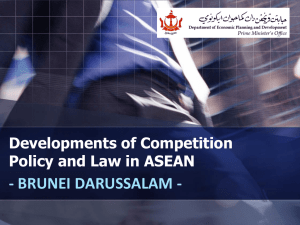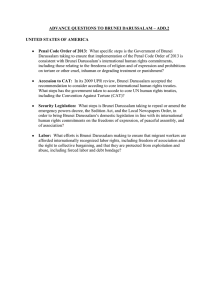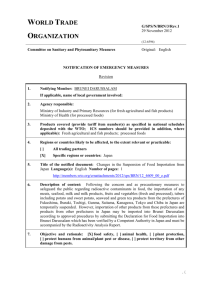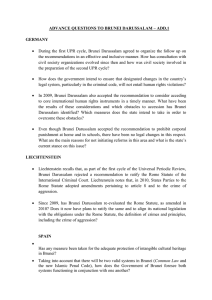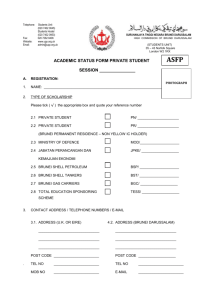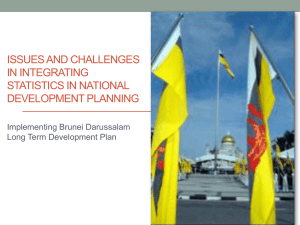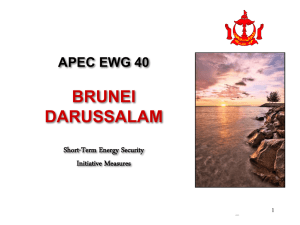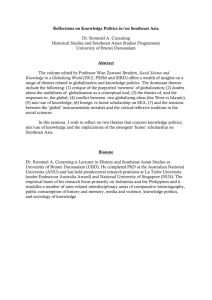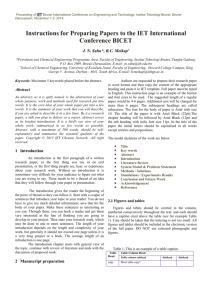Handout
advertisement
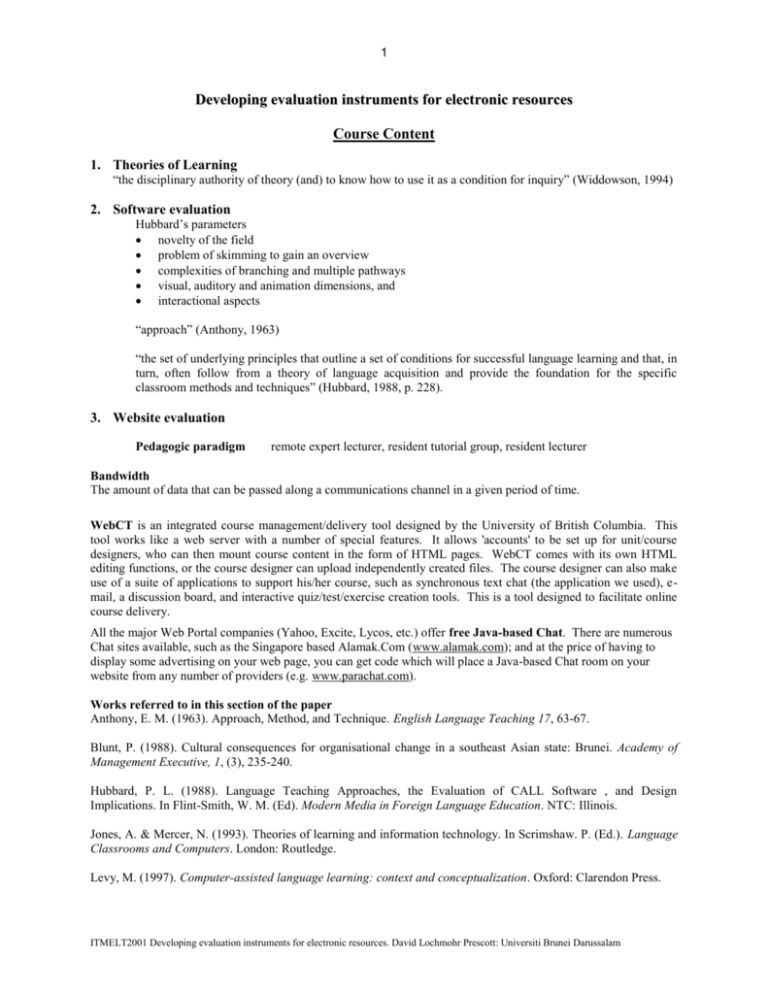
1 Developing evaluation instruments for electronic resources Course Content 1. Theories of Learning “the disciplinary authority of theory (and) to know how to use it as a condition for inquiry” (Widdowson, 1994) 2. Software evaluation Hubbard’s parameters novelty of the field problem of skimming to gain an overview complexities of branching and multiple pathways visual, auditory and animation dimensions, and interactional aspects “approach” (Anthony, 1963) “the set of underlying principles that outline a set of conditions for successful language learning and that, in turn, often follow from a theory of language acquisition and provide the foundation for the specific classroom methods and techniques” (Hubbard, 1988, p. 228). 3. Website evaluation Pedagogic paradigm remote expert lecturer, resident tutorial group, resident lecturer Bandwidth The amount of data that can be passed along a communications channel in a given period of time. WebCT is an integrated course management/delivery tool designed by the University of British Columbia. This tool works like a web server with a number of special features. It allows 'accounts' to be set up for unit/course designers, who can then mount course content in the form of HTML pages. WebCT comes with its own HTML editing functions, or the course designer can upload independently created files. The course designer can also make use of a suite of applications to support his/her course, such as synchronous text chat (the application we used), email, a discussion board, and interactive quiz/test/exercise creation tools. This is a tool designed to facilitate online course delivery. All the major Web Portal companies (Yahoo, Excite, Lycos, etc.) offer free Java-based Chat. There are numerous Chat sites available, such as the Singapore based Alamak.Com (www.alamak.com); and at the price of having to display some advertising on your web page, you can get code which will place a Java-based Chat room on your website from any number of providers (e.g. www.parachat.com). Works referred to in this section of the paper Anthony, E. M. (1963). Approach, Method, and Technique. English Language Teaching 17, 63-67. Blunt, P. (1988). Cultural consequences for organisational change in a southeast Asian state: Brunei. Academy of Management Executive, 1, (3), 235-240. Hubbard, P. L. (1988). Language Teaching Approaches, the Evaluation of CALL Software , and Design Implications. In Flint-Smith, W. M. (Ed). Modern Media in Foreign Language Education. NTC: Illinois. Jones, A. & Mercer, N. (1993). Theories of learning and information technology. In Scrimshaw. P. (Ed.). Language Classrooms and Computers. London: Routledge. Levy, M. (1997). Computer-assisted language learning: context and conceptualization. Oxford: Clarendon Press. ITMELT2001 Developing evaluation instruments for electronic resources. David Lochmohr Prescott: Universiti Brunei Darussalam 2 Maxwell, A. R. (1996). The place of the Kadayan in traditional Brunei society. South East Asia Research, 4, (2), 157-196. Robb, T. (1996). ESL Software Evaluation Form [on-line]. Available WWW: http://www.kyoto-su.ac.jp/information/tesl-ej/ej06/mr2/mr2app1.html Shive, G. (1999). Information Technology, School Change and the Teacher’s Role. Paper presented at the Conference on New Professionalism in Teaching, Chinese University of Hong Kong, January 1999. Vygotsky, L. S. (1978). Mind in society: The development of higher psychological processes. Cambridge: Harvard University Press. Widdowson, H. (1994). Some Observations on Teacher Development. In Richards, K. & Roe, P. (Eds.). Distance learning in ELT. London: MacMillan. _____________________________________________________________________________________________ Evaluation Issues 1. General evaluation issues Freedom of action is meaningless without limits: these are, negatively, constraints when they inhibit action, but they are, positively, necessary enabling conditions. The crucial thing is not to deny the disciplinary authority of theory, but … to make it relevant as a set of bearings to find your own way (Widdowson, 1994, p. 20). 2. Software evaluation issues CALL Software Review task Evaluation Framework Methodology of the software What methods might a teacher employ in using the software? Is it only useful in the configuration individual learner to PC, could it be used in a pair or group activity? Approach to language instruction What learning theories underpin the software; behaviourist, constructivist, socio-cultural or a combination of these? What evidence is there in the software and its operation that shows this/these approach(es)? Is the software learner centered or instructor centered? Design features Comment on things such as use of colour, sound, highlighting, branching, clues (shape, linguistic clues, initial letter etc), layout, graphics, media features (if any) and so forth. Software procedure You should also comment on aspects of the software such as ease of navigation, clarity of instructions, availability of help, use of hints, definitions, examples and so forth. Rating procedure Use of a rating procedure to give a quick impression of the software. Description of software How does the software operate? What are the objectives of the software? Reflection on effectiveness of format Your final task after evaluating the software is to reflect critically on the effectiveness of the evaluation instrument that you designed and used. Given that no instrument is likely to be perfect the first time it is implemented the aim of this activity is honest insightful comment about strengths and weaknesses of the instrument you designed and trialled. The difficulty of establishing the categories of evaluation: “many of the components in each category are interrelated both inside and outside the category” (Norazimawati Ahmad: 2000, p. 8). ITMELT2001 Developing evaluation instruments for electronic resources. David Lochmohr Prescott: Universiti Brunei Darussalam 3 3. Web-site evaluation issues ELT WWW evaluation task Evaluation Framework Site Description Field Type of Instruction Tutorial Pair Group Methodology instructor/learner centered feedback clues test mode progressive levels of difficulty Implicit learning theories behaviourist constructivist Vygotskyan socio-cultural Design features colour enhance/reinforces learning colour quality and choice layout spacing windows pop-ups, FAQs comments facility Graphics images to aid/reinforce learning superfluous Navigation within activities within the site ease of navigation Technology to reinforce/enhance learning both mouse & keyboard responsive audio video links email and print functions downloads Range of activities Comments Explanations for use Overall Comments ITMELT2001 Developing evaluation instruments for electronic resources. David Lochmohr Prescott: Universiti Brunei Darussalam 4 Works referred to in this section of the paper Eastment, D. (2001). ICT in Language Teaching. Keynote Address at The International Conference for Language Teachers: Language for Lifelong Learning. The British Council/CfBT, Brunei Darussalam, March. Luey, H. S. (cited in Oppenheimer: (1997). The Computer Delusion. The Atlantic Monthly. July, p. 11) Luke, A. (2000). Literacies, Futures and the Restructuring of Educational Systems in ‘Post-IMF’ Conditions. Paper presented at The Second International Conference on Southeast Asia Ruptures and Departures: Language and Culture in Southeast Asia. University of The Philippines, January, 2000. Norazimawati Ahmad: (2000). Reflective Comments on the Evaluation Format. Unpublished undergraduate manuscript, Universiti Brunei Darussalam. Oppenheimer, T. (1997). The Computer Delusion. The Atlantic Monthly. July, 1-15. Prescott, D. L. (2001). Electronic Resources for ELT. Workshop at The International Conference for Language Teachers: Language for Lifelong Learning. The British Council/CfBT, Brunei Darussalam, March. Widdowson, H. (1994). Some Observations on Teacher Development. In Richards, K. & Roe, P. (Eds.). Distance learning in ELT. London: MacMillan. Reflective evaluation “One of the difficulties I encountered in completing this evaluation format is in grouping the features under one heading” (Zatul-iffah: 2000, p. 10) comments are necessary “in order to justify the ratings I have given for each category” (Isma: 1999, p. 6) “this evaluation format is not prepared by a professional so it is a known fact that it still needs some improvement to make it perfect” (Zatul-iffah: 2000, p. 10) Works referred to in this section of the paper Butler, J. (1996). Professional development: Practice as text, reflection as process and self as locus. Australian Journal of Education, 40, (3), 265-283. Goodson, I. (1999). Towards a Principled Professionalism for Teaching. Keynote address at the Conference on New Professionalism in Teaching. Chinese University of Hong Kong, January 1999. Isma Fazilla bte Hj Ismail. (1999). Reflective Comments on the Evaluation Format. Unpublished undergraduate manuscript, Universiti Brunei Darussalam. Wainryb, R. (1992). Classroom Observation Tasks. Cambridge: Cambridge University Press. Wyatt, D. H. (1988). What can research tell us about CALL? System, 16, (2), 221-223. Zatul-iffah Binti Hj Ali Omar. (2000). Reflective Comments on the Evaluation Format. Unpublished undergraduate manuscript, Universiti Brunei Darussalam. ITMELT2001 Developing evaluation instruments for electronic resources. David Lochmohr Prescott: Universiti Brunei Darussalam
